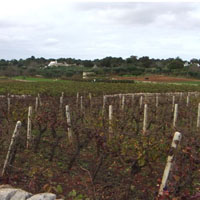On farm survival of Apulian legume and cereal landraces in relation to land cover/land use changes. A case study

Accepted: 20 December 2020
HTML: 26
All claims expressed in this article are solely those of the authors and do not necessarily represent those of their affiliated organizations, or those of the publisher, the editors and the reviewers. Any product that may be evaluated in this article or claim that may be made by its manufacturer is not guaranteed or endorsed by the publisher.
Highlights
- Analysis of present distribution of Apulian legume and cereal landraces.
- Short description of the landscape of collection sites.
- Comparison of present and past diffusion of landrace cultivation.
- Changes in land cover/land use that occurred over the last three decades.
Apulia (southeast of Italy) has always been an agricultural region in the Italian landscape. Nowadays, the countryside is a mix of natural environments and artificial landscapes. From 2014 to 2016, the region has been the object of a project aimed to collect information about geographic position and surface devoted to legume and/or cereal landrace cultivation. The collection missions carried out allowed the acquisition of 352 samples belonging to eight legumes and six cereal species. Chickpeas predominated among legumes, while durum and common wheat landraces prevailed among cereals. The cultivation of these landraces was mainly located in the marginal areas of central and southern Apulia region. The geographical information system technology, used in order to geo-reference the collection sites, allowed investigating the changes in land cover/land use (LCLU) occurred over the last three decades at each collecting site. In addition to the evidences collected at field level, the comparison of old ortho-photos and recent satellite images, available on Copernicus Land Monitoring Service of European Environment Agency, shown that very limited changes of LCLU have occurred. Near the collection sites, the agrarian landscape is remained highly fragmented as it was three decades ago. The cultivation side by side of irregular patches with legumes, cereals, olive trees, and grapevine characterise the agricultural landscape. Based on these evidences it can be infer that the absence of significant changes in LCLU has play a positive role in the safeguard of on farm conservation of Apulian landraces.
How to Cite
PAGEPress has chosen to apply the Creative Commons Attribution NonCommercial 4.0 International License (CC BY-NC 4.0) to all manuscripts to be published.

 https://doi.org/10.4081/ija.2021.1724
https://doi.org/10.4081/ija.2021.1724



